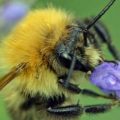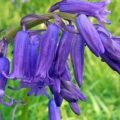Green alkanet Pentaglottis sempervirens
Table of Contents
A bristly hairy plant with striking blue flowers, green alkanet thrives in moist soils in shaded location. Although it’s often considered a pernicious weed, it’s extremely popular with pollinators, especially bees.

Plant family: Boraginaceae
Aliases: Evergreen bugloss, alkanet
Flowering period: April – July
Flower colour: Blue
Preferred soil type: Most types, moist
Habitat: Woodland, hedgerows, roadside verges
Status: Common
General information
A herbaceous perennial wildflower, that’s a member of the borage family, a group that also includes common comfrey and forget-me not. It’s native to Western Europe, growing up to a metre in height, green alkanet prefers damp soils in shaded locations, it’s mostly found on roadside verges, hedgerows and woodland.
It’s an invasive plant, with a deep, stout taproot, it spreads rapidly by self seeding and for these reasons is often considered a weed.
Identification

Flowers: Borne in clusters, the small blue flowers have white centers and measure up to 10mm in diameter, with each flower having five petals
Leaves: The alternate leaves are broadly ovate (tapering to a point), they have prominent veins, with coarse, bristly hairs that protect them from wildlife. The basal leaves which measure up to 40cm long are larger that the upper leaves, as they decrease in size the higher they are.
Value for wildlife
Green alkanet produces pollen and nectar and is a favourite of both honey bees and bumble bees. It’s also visited by butterflies, hoverflies.
Uses for Green alkanet
The flowers are edible, but are primarily used in drinks and salads as decoration.
Green alkanet images
Click to enlarge

This work is licensed under a Creative Commons Attribution 4.0 International License.
You are free to use, share and adapt any of the images on this page, under the condition we receive a followed backlink to our website https://diversegardens.co.uk as the image source.
















